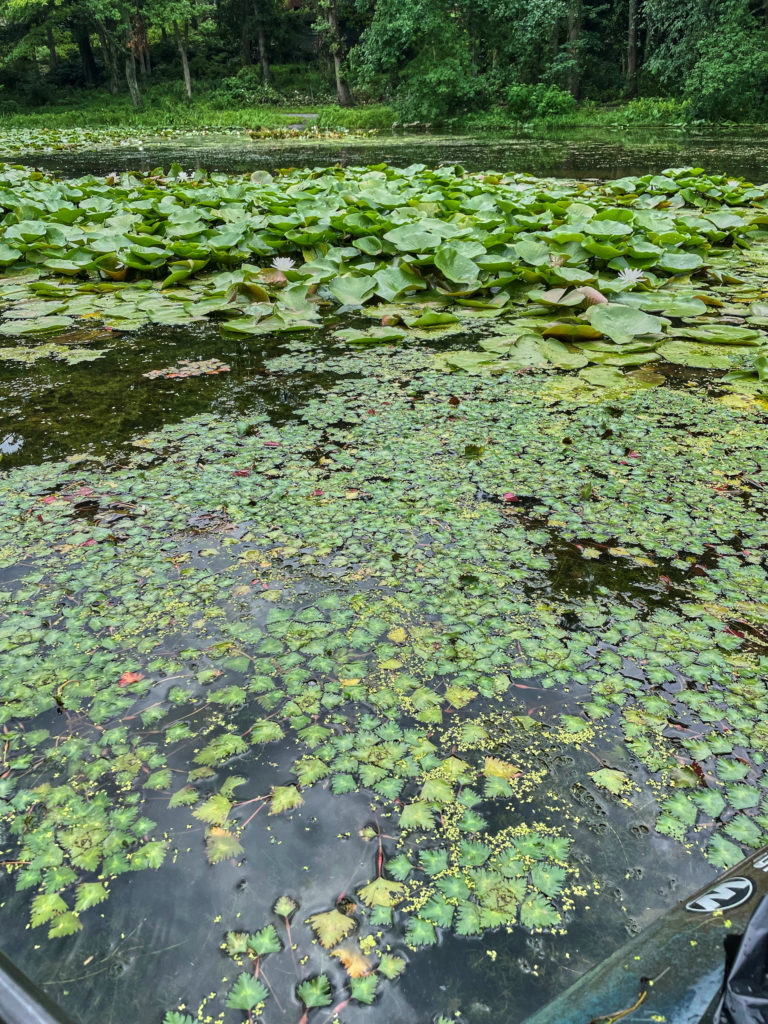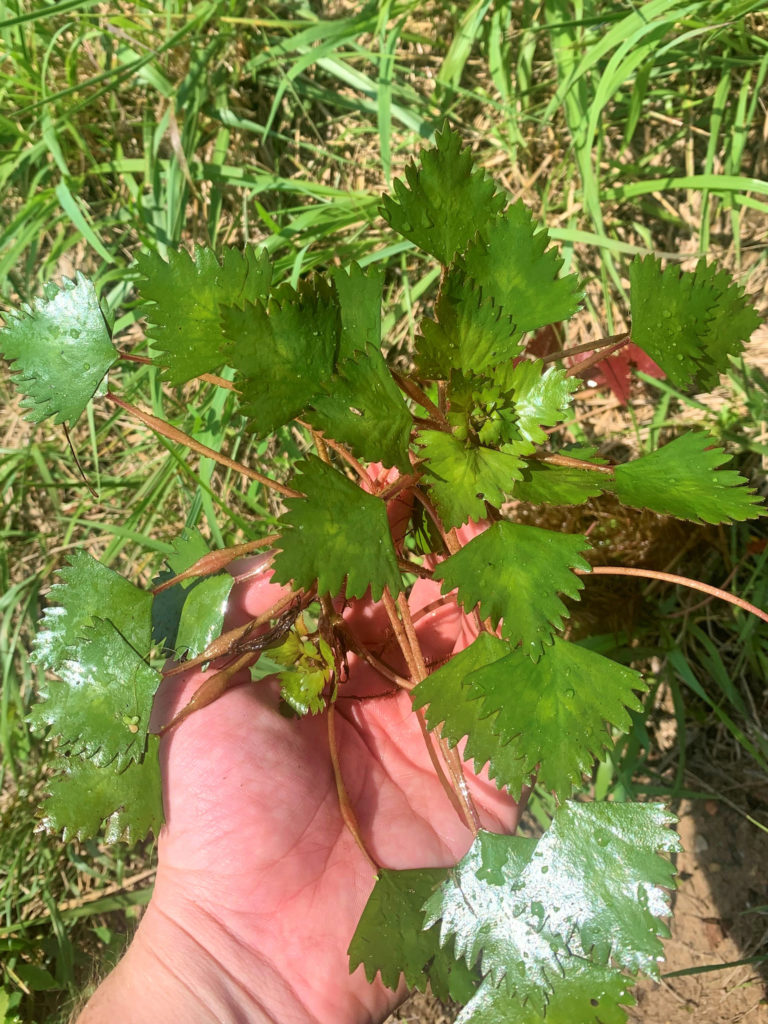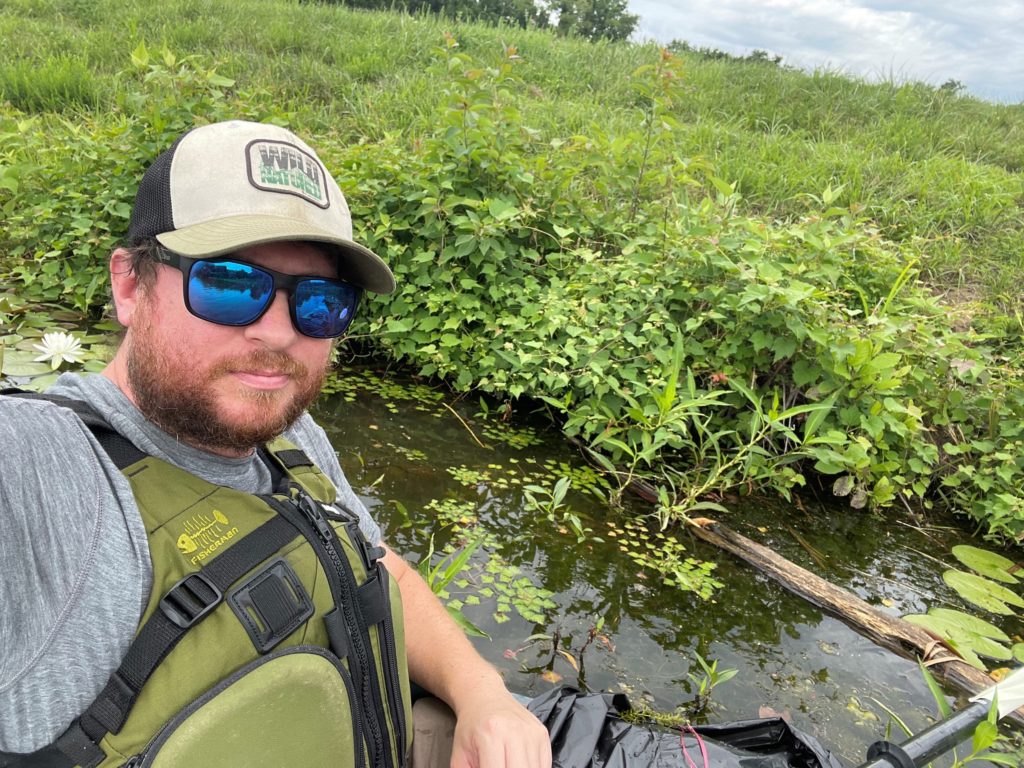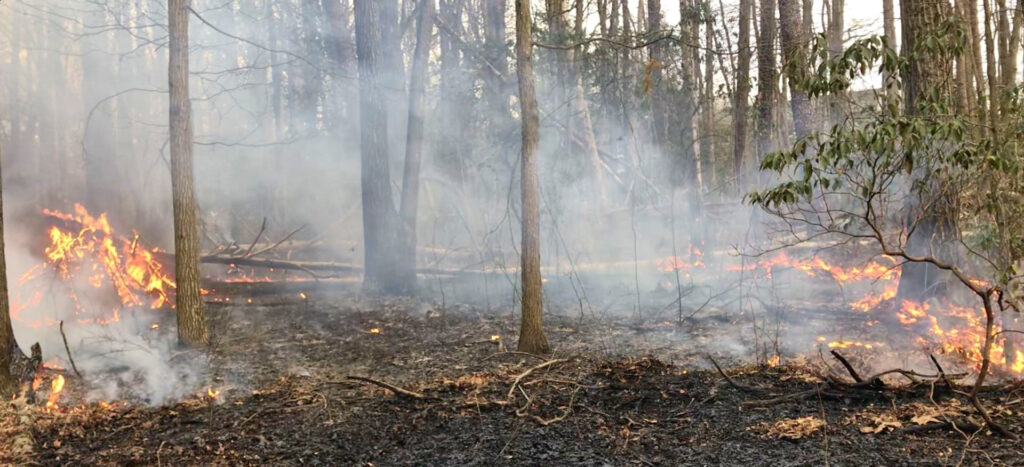An app for mobile devices called Seek, from iNaturalist, is “a social network for sharing biodiversity information,” according to the app’s description. Its purpose is two-fold. It can be used to identify plants, animals, insects and other species. Users take photos and see what species the app suggests. The scientific community can glean valuable data from users’ observations. This is precisely what happened on July 14 when a community member observed and reported an aquatic plant in Greenbelt Lake using the Seek app, starting a chain reaction in conservation mechanisms that track movements of invasive species. The U.S. Geological Survey’s (USGS) Nonindigenous Aquatic Species Database (nas.er.usgs.gov) tracks the distribution of invasive aquatic species across the nation from its office in Gainesville, Fla. USGS staff noticed the post about this aquatic plant, which they suspected to be water chestnut (Trapa sp.). The USGS reached out to the City of Greenbelt Department of Public Works and put Environmental Coordinator Kevin Carpenter-Driscoll in touch with local specialists from the D.C. Department of Energy and Environment and the USGS, who have been working to remove water chestnut from northern Virginia, where scientists have documented it for at least 20 years. Carpenter-Driscoll coordinated with Nancy Rybicki from the USGS, who came to Greenbelt Lake and confirmed the species as two-horned water chestnut (Trapa bispinosa), the first confirmed identification of this species in Maryland.
The fruit, or “chestnut,” of the water chestnut has thornlike spines that allow it to become lodged in unsuspecting waterfowl like ducks or Canada geese and carried to new bodies of water (the most likely scenario for how it appeared in Greenbelt). Water chestnut is environmentally concerning because of its ability to grow and spread, both vegetatively and by seed. It expands across the water’s surface, starving other plant life of light and negatively impacting dissolved oxygen content in the body of water. Luckily, the water chestnut in Greenbelt Lake only established a few small populations near the dam and by the tip of the peninsula.
Public Works staff used a kayak to manually remove six 33-gallon trash bags full of water chestnut and properly dispose of them. Members of the public should be on the lookout for invasive water chestnut in other bodies of water in the area and report it via iNaturalist or directly to the Maryland Department of Natural Resources at 410-841-5920.






